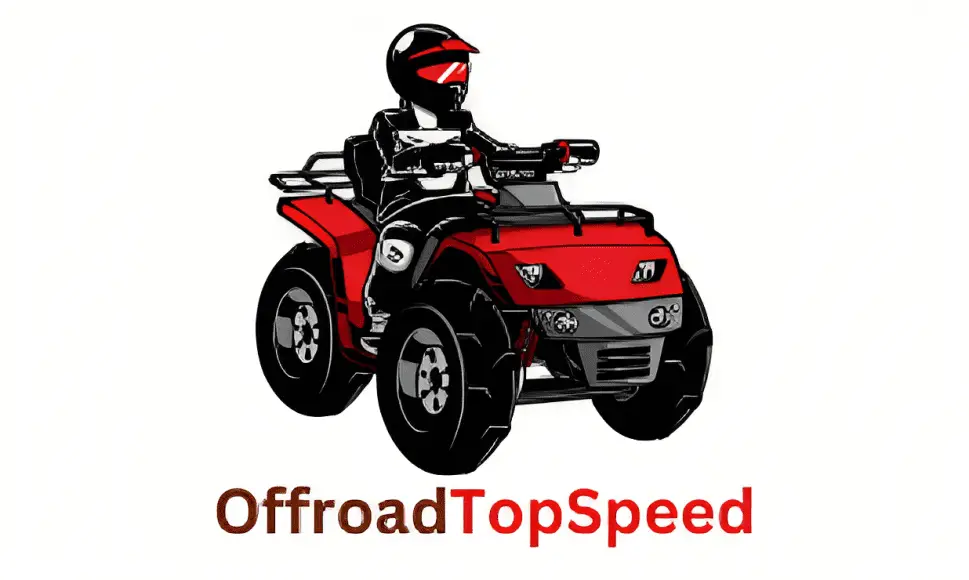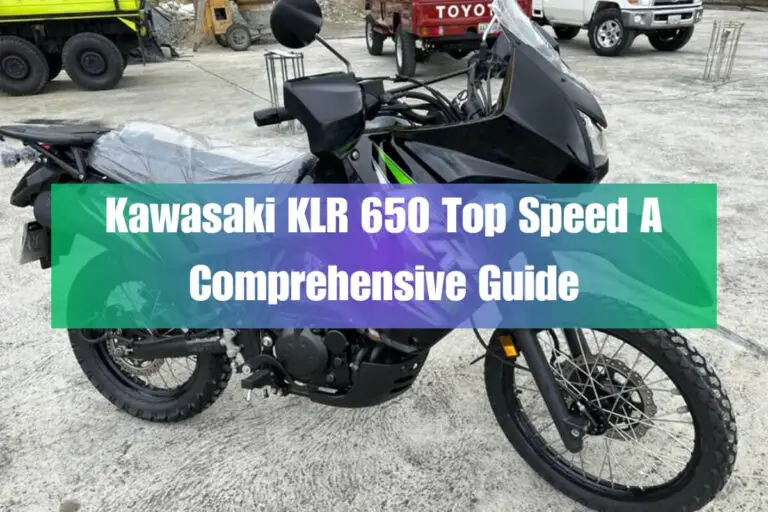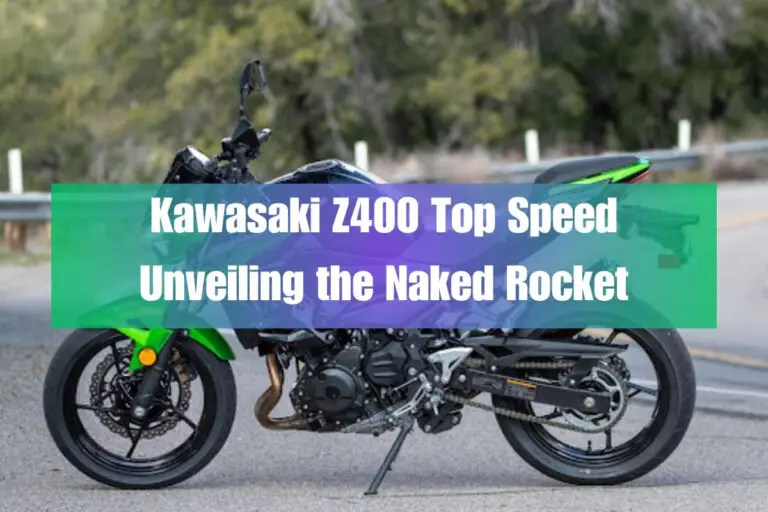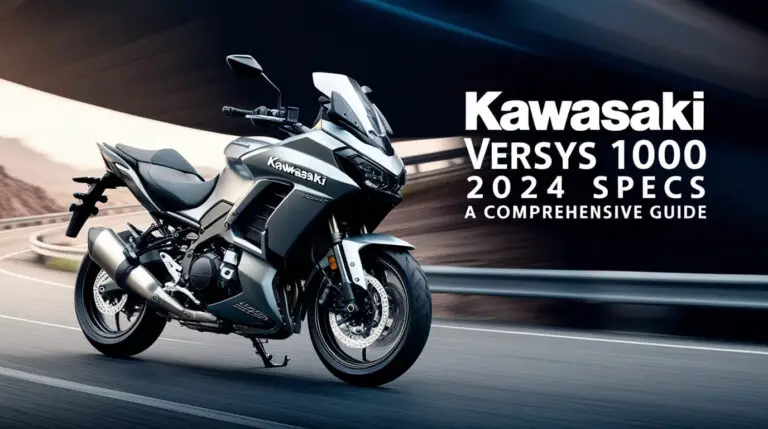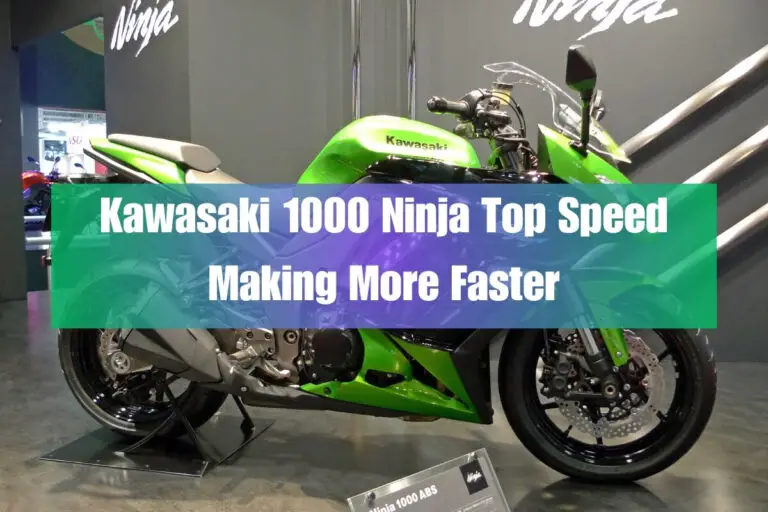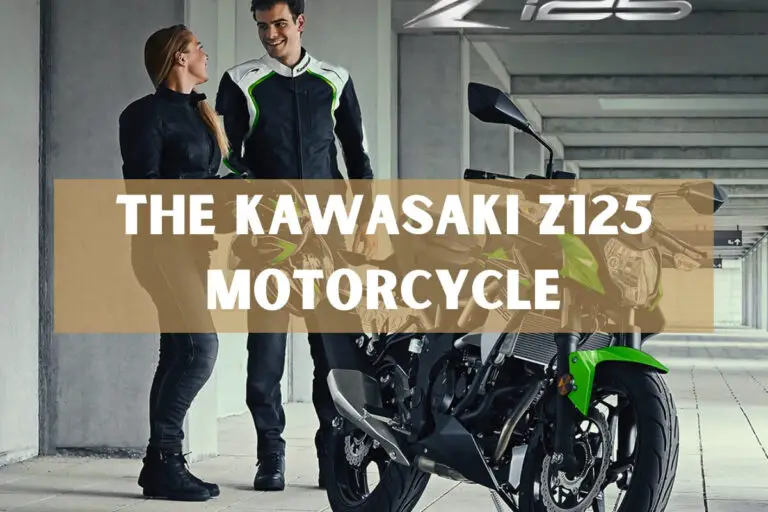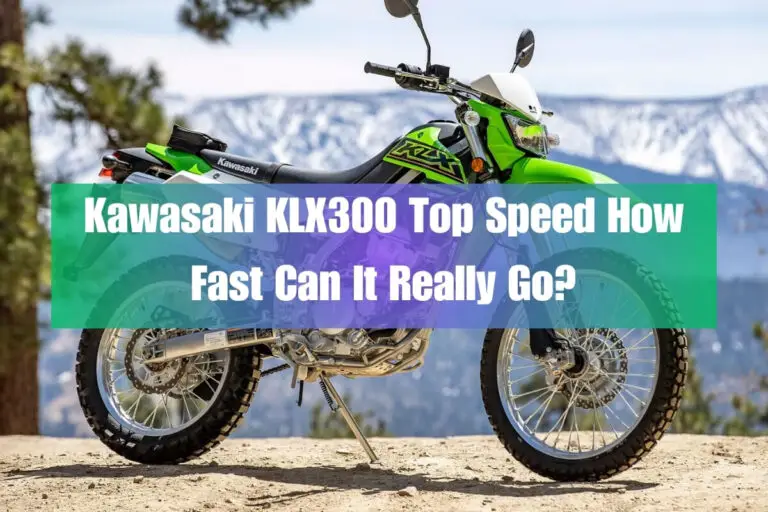Kawasaki Ninja H2R Top Speed: Complete performance Analysis
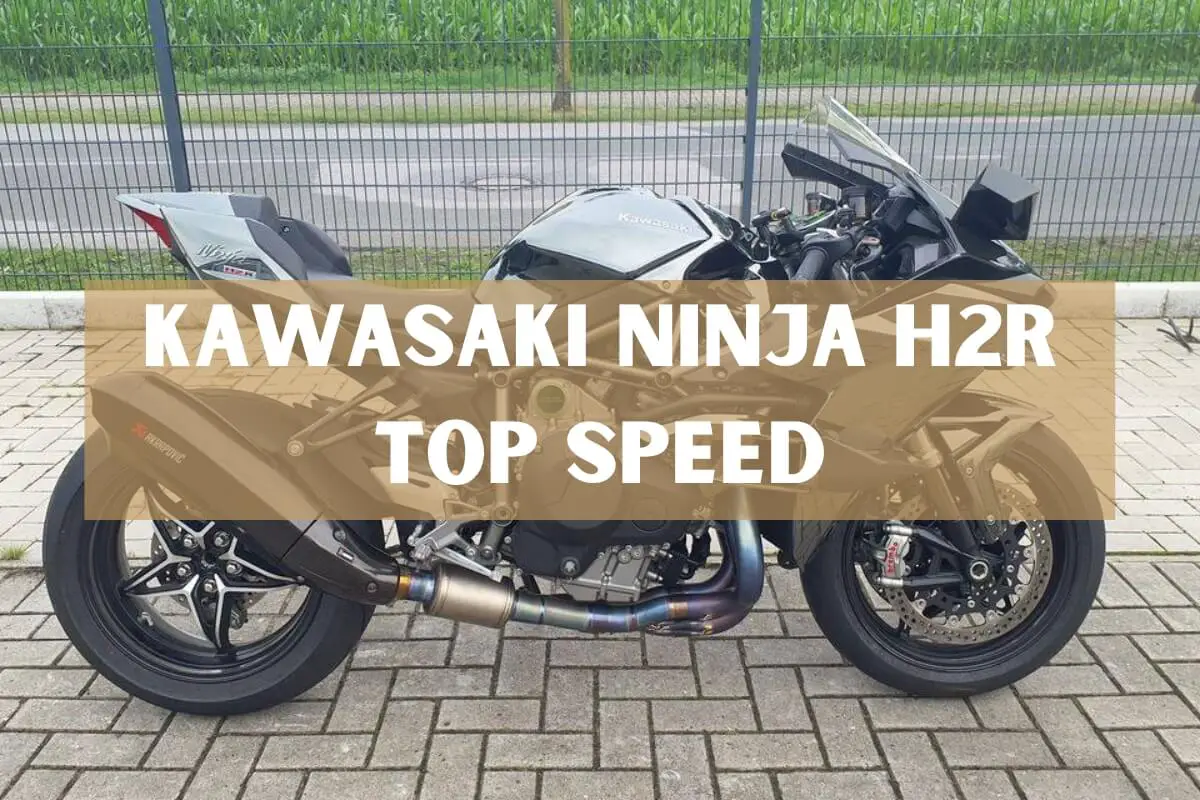
The world of superbikes is constantly pushing the limits of motorcycle technology and performance. As speeds continue to rise, one bike stands above the rest as the current record holder for the fastest production motorcycle in the world – the Kawasaki Ninja H2R.
This track-only monster is Kawasaki’s most insane creation yet, claiming an unbelievable top speed of 240 mph. But what allows this beefed-up hyperbike to hit such mind-boggling velocities? How does it handle and stop at such extreme speeds? And what would it actually feel like to tear through the asphalt faster than a Formula 1 race car?
In this article, we’ll uncover the secrets behind the Ninja H2R’s commanding top speed and examine what makes this motorcycle capable of breaking every speed record known to man. From its powerplant and aerodynamics to its handling, brakes, and riders aids, discover how Kawasaki created a two-wheeled rocket that stretches the limits of speed.
An Introduction to Kawasaki’s Insane Track-Only Monster
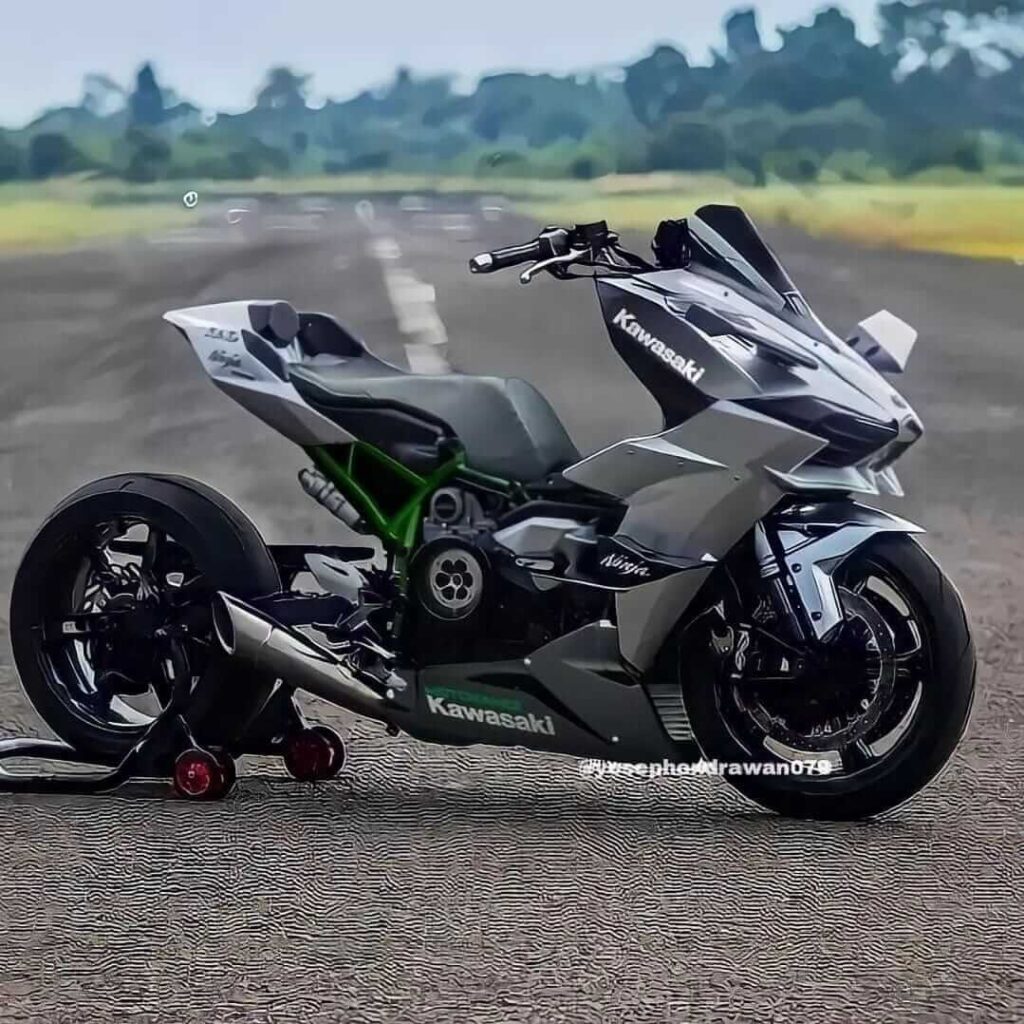
When Kawasaki first debuted the supercharged H2 in 2015, it delivered a staggering 210 hp and was already considered one of the fastest production bikes money could buy. But they didn’t stop there. Kawasaki decided to push the boundaries even further with an even more powerful, track-focused H2R model featuring significant improvements to nearly every component.
“When we decided to develop a track-only model, we were free to push the limits of motorcycle speed even further,” said Kawasaki Heavy Motors at its announcement.
While kept for closed-course use only, the H2R represented Kawasaki flexing its engineering might to create the ultimate expression of speed on two wheels. Power was boosted to 310 HP, with major advances in aerodynamics, chassis rigidity, and electronics helping achieve faster acceleration and cornering for sliced lap times.
“Our goal was singular – to create the fastest accelerating, best handling and highest top speed production motorcycle ever built,” Kawasaki stated.
The result? A hyper-specialized machine custom built to chase nothing but maximum velocity across every stretch of pavement.
H2R Specs – What’s Under the Hood of this 326 HP Beast?
So how does Kawasaki manage to extract over 310 horsepower from the Ninja H2R to deliver such incredible speed? Let’s examine some key specs and features that allow this motorcycle to bend the laws of physics:
| Spec | Detail |
| Top Speed | 240 mph |
| Price | $57,500 USD |
| Engine | 998cc, liquid-cooled, 4-stroke, DOHC 16-valve in-line four |
| Bore x Stroke | 76.0 x 55.0mm |
| Compression Ratio | 8.3:1 |
| Fuel System | DFI® with 50mm throttle bodies (4) with dual injection; Kawasaki Supercharger |
| Power | 310 HP |
| Torque | 121 lb-ft |
| Starter | Electric |
| Transmission | 6-speed, return, dog-ring |
| Clutch | Wet multi-disc, manual |
| Final Drive | Sealed chain |
| Brakes Front | Dual radial-mount, opposed 4-piston Brembo Stylema® calipers, dual semi-floating 330mm discs, KIBS ABS |
| Brakes Rear | Opposed 2-piston calipers, single 250mm disc, KIBS ABS |
| Suspension Front | 43mm inverted fork with adjustable rebound and compression damping, spring preload adjustability and top-out springs/4.7 in |
| Suspension Rear | Uni-Trak®, Öhlins TTX36 gas charged shock with piggyback reservoir, 30-way compression and rebound damping and adjustability, and hand-turn spring preload adjustability and top-outspring/5.3 in |
| Tires Front | 120/60 ZR17 V01F slick |
| Tires Rear | 190/65 ZR17 V01R slick |
| Wheelbase | 57.1 in |
| Seat Height | 32.7 in |
| Ground Clearance | 5.1 in |
| Curb Weight | 476.3 lb |
| Overall Length | 81.5 in |
| Overall Width | 33.5 in |
| Overall Height | 45.7 in |
| Headlight | LED |
| Tail Light | LED |
| Ignition | Digital |
| Fuel Tank Capacity | 4.5 gal |
| Color | Mirror Coated Matte Spark Black |
| Warranty | 12 Months |
Clearly the supercharged 998cc inline-four engine is the heart of this speed demon, delivering a monstrous 310 ponies to terrorize any racetrack.
The key contributor enabling all that power is Kawasaki’s highly advanced supercharger that efficiently compresses intake air to increase power on demand. This centrally mounted turbine is driven directly off the crankshaft, providing boosted power across the entire RPM range for enhanced acceleration.
“The supercharger had to deliver high performance across the entire span of engine speeds that ranging from low speeds to maximum output,” commented Kawasaki’s engineers.
Supporting track-ready performance is the rigid twin-spar aluminum frame, beefy top-spec suspension components like the Showa SFF-BP fork and rear monoshock, a quick 6-speed transmission, and minimal weight of just 476.3 lb. Everything about this motorcycle speaks to outright speed – exactly what Kawasaki intended.
Aerodynamics and Design: How the H2R Cheats the Wind

While engine performance plays a crucial role, once bikes start breaking the 240 mph+ barrier, how they slice through the air becomes one of the biggest factors determining top speed capabilities. At such extreme velocities, wind resistance wants to rip you right off the machine!
Kawasaki pulled no punches when designing the Ninja H2R to cheat the wind as best as possible. Features like the aggressive full-fairing bodywork, chin-mounted winglets, and aerodynamic tail were all honed in the wind tunnel to facilitate smooth airflow.
These sleek, enveloping body panels and surfaces guide airflow smoothly around and underneath the motorcycle, helping prevent turbulent airflow from creating excessive drag and instability.
The new super-slippery paint coating itself also minimizes surface friction to allow smoother airflow across the bike. Every detail down to the fairing screws align flush with the surface to facilitate clean airflow.
“We utilized CFD analysis tuning to enhance the aerodynamic performance by directing the air flow effectively through and underneath the whole bodywork,” explained Kawasaki.
While still unverified, there are even rumors Kawasaki might have incorporated a “Ram Air” dynamic air intake system to force additional cold, high-pressure air into the engine at speed. This can provide a natural power boost, similar to how forced induction works.
Ultimately, it’s the masterful unison of efficient aerodynamic design coupled with prodigious engine output that gives wings to the H2R to climb all the way up to a world-beating top speed.
Hitting Kawasaki’s Claim of 240+ MPH: Record Attempts
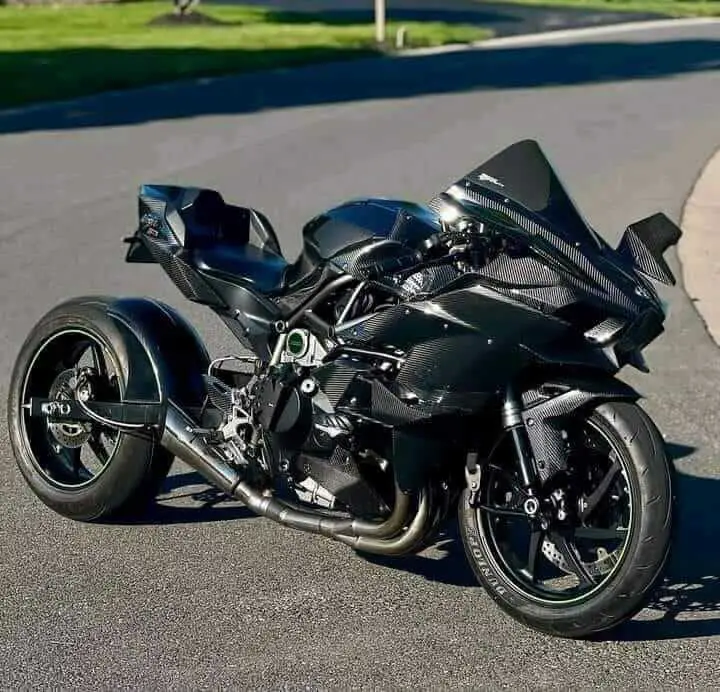
Of course, we couldn’t discuss the Ninja H2R without addressing the elephant in the room – Kawasaki’s claimed top speed of over 240 mph. That’s entering the realm of what prototype race cars can achieve, not production street bikes!
Considering how tightly controlled Kawasaki’s claims and press images have been, many have doubted whether the H2R has actually clocked these speeds. Some have written it off as purely a marketing stunt.
However, while certainly ambitious, evidence does seem indicate the potential to be there. Kawasaki brought a pack of journalists and test riders to their private Bonneville test grounds in Australia to witness the Ninja H2R hit these velocities first-hand.
While observing from the chase car, they reportedly saw the speedo climb all the way past 240 kph (150 mph) before having to slow down. Multiple riders apparently achieved similar results.
Of course, these closed-course tests are not official land speed world records, but the observers contend the bike seemed completely stable at these crazy speeds.
If accurate, it shows the H2R has the ingredients for setting verified world speed records in the right environment. In fact, Kawasaki may already be secretly working on an official record attempt behind closed doors!
Handling at Speed – How Rider Aids Keep the H2R Planted
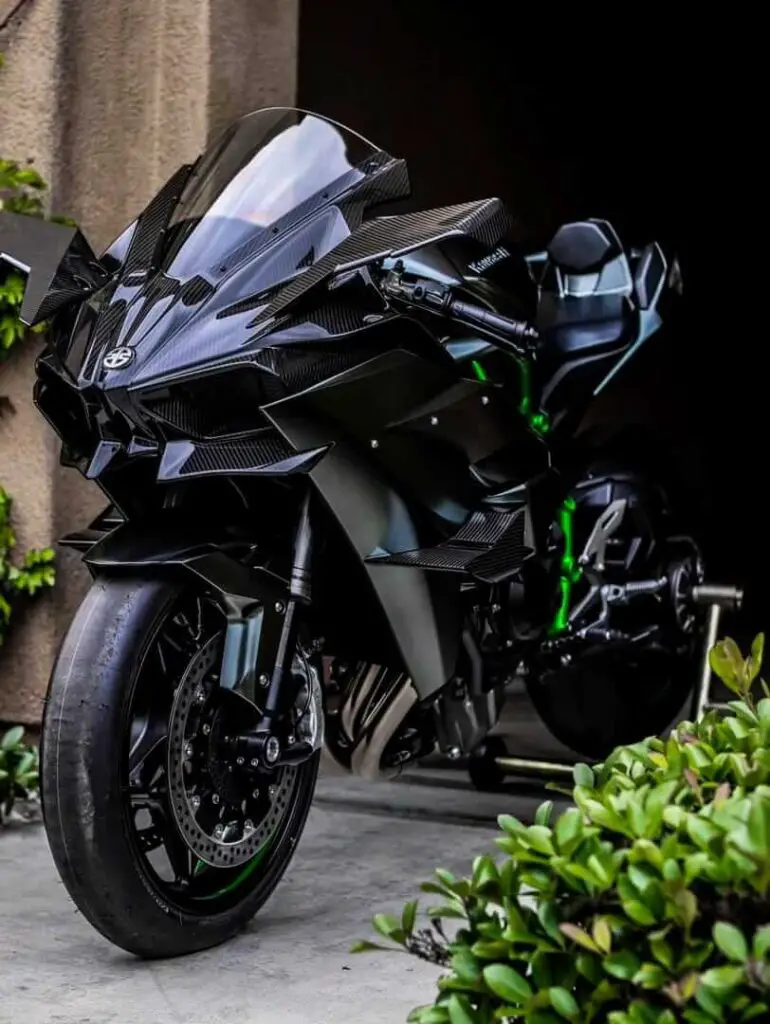
Achieving warp speed velocities on a motorcycle presents all kinds of stability and handling challenges. How does the Ninja H2R manage to stay composed diving into corners and accelerating out of them at more than 240 mph?
It takes an ensemble of intelligent rider aids and advanced electronics to make controlling the H2R feasible at the limit. Systems like traction control and launch control all contribute to managing power for optimized acceleration and corner exit traction.
Helping keep everything pinned during extreme lean angles is the Bosch IMU, enabling features like traction control and slide control to activate based on lean angle and drive forces.
Minimizing headshake at high speed is the Öhlins electronic steering damper that firms up the more velocity increases. Finally, the quickshifter ensures seamless clutch-less upshifts when the throttle is wide open chasing ultra-high velocities across long straights.
Altogether, these advanced electronics and rider aids enable expert riders to push the H2R to its performance limits at the track in a controllable manner. Rest assured, this Kawasaki receives no electronic speed limiter – it’s built to run as fast as its wheels can spin!
Braking Power: Brembo Stylema Stoppers Haul Down Speed
We know how effectively the Ninja H2R accelerates to outrageous speeds, but what about shedding all that velocity when it comes time to lean hard or slow down?
Bringing this 476 lb motorcycle hyperbike back to reasonable speeds is no easy task, demanding some of the most powerful braking components fitted to any production motorcycle.
Up front, dual Brembo Stylema 330mm brake discs and monobloc calipers deliver extreme stopping bite on par with a supercar. These extra-large rotors provide ample swept area for heat dispersion while the stiff one-piece calipers offer superb brake modulation to avoid lock up.
Out back, a 250mm disc teams up with another Brembo monobloc caliper to provide ample rear braking force. Stainless steel braided lines maintain a firm brake pedal when repeatedly shedding high speeds lap after lap.
Advanced electronic rider aids also assist braking performance. Features like rear wheel lift control and engine brake control help prevent lock ups during excessive braking, helping keep the motorcycle composed and stable. Altogether, this adds up to a finely tuned braking package ready to repeatedly scrub off 240 mph.
What The H2R Is Like To Ride At 240+ MPH?

We’ve covered all the performance metrics and hardware that provides the Ninja H2R such extreme high velocity potential. But what’s the actual experience inside the cockpit like tearing down the tarmac at speeds exceeding 240 mph?
According to Kawasaki test rider Soichiro Fukuoka, the H2R remains remarkably stable and controlled even when hitting mind-bending velocities:
“When running at high speeds over 240 km/h (150 mph), I didn’t feel any high-frequency vibrations at all through the handlebars,” described Fukuoka.
He added that despite the tremendous wind forces, the aerodynamic design allowed him to stay tucked neatly behind the windscreen in a sustainable riding position without excessive buffeting:
“I can still fully take advantage of the aerodynamics and the performance of both man and machine.”
However, any sudden handlebar inputs do get amplified at such speeds, so smooth motorcycle control is essential. Additionally, the intense acceleration forces pinning you to the tank are likely just as breathtaking as the speed itself!
While undoubtedly a handful, for Kawasaki’s fearless test riders, wringing every last drop of the Ninja H2R’s performance to over 240 mph remains stable enough to still feel in control. Just don’t expect to see Fukuoka casually cruising the highways at 300+!
The Quest for More Speed: 2023/2024 H2R Updates
The Ninja H2R has cemented itself as the highest performing and fastest production motorcycle ever conceived by a major manufacturer. But for Kawasaki engineers, the quest for more speed is never finished as they continue testing performance boundaries.
For their next iteration of the H2R slated for 2023 or 2024, Kawasaki will surely have some exciting upgrades in store to push the limits of speed even further.
We can expect revised engine tuning to unlock more power from the 998cc supercharged powerplant, possibly nudging up closer to the 326 hp mark. Improved aerodynamics could lift top speed by several mph, inching closer to that 240 mph summit.
A diet of weight reduction components and increased use of carbon fiber is likely in store as well. Upgraded Brembo brakes, sharper handling Öhlins Smart suspension, and enhanced electronics/dash display are also anticipated updates.
Most intriguing, rumors suggest Kawasaki may even homologate their next Ninja H2R variant for legal street use while still retaining the extreme high-speed performance! Clearly they have no plans to slow down development of their outrageous halo hyperbike anytime soon.
How the H2R Compares to Other Ninja Models?
| Model | Year | Top Speed |
|---|---|---|
| Kawasaki Ninja H2R | 2015-2022 | 240+ mph (claimed) |
| Kawasaki Ninja H2R SE | 2020 | 240+ mph (estimated) |
| Kawasaki Ninja H2 Carbon | 2017-present | 240+ mph (tested) |
| Kawasaki Ninja H2 | 2015-present | 183 mph (limited) |
| Kawasaki Ninja H2 SX | 2018-present | 185 mph (limited) |
| Kawasaki Ninja H2 SX SE | 2019-present | 209 mph (limited) |
Conclusion – Why the Ninja H2R Redefines Fast
In this detailed deep dive, we’ve uncovered why Kawasaki’s track-only Ninja H2R stands in a league of its own as the fastest accelerating and highest top speed production motorcycle available today.
Its menacing supercharged engine churning out 310 hp combines with wind cheating aerodynamics, sharp handling chassis, and intelligent electronics that drive the H2R to achieve velocity near 240 mph – a figure virtually unheard of from a street-derived motorcycle.
Yet despite its eye-watering speed, Kawasaki test riders have managed to tame the H2R enough to remain stable and controlled even while exceeding 240+ mph on the racetrack. Make no mistake – this machine was engineered for one purpose only: delivering unrivaled four-wheeled levels of speed in a road-going package.
While few riders will ever sample the thrilling top speed this motorcycle is truly capable of, the Ninja H2R continues pushing the boundaries of what we thought possible on two wheels. It has cemented itself as an absolute ground-breaking icon that will forever go down in history as the fastest production motorcycle ever created.
frequently asked questions about the Kawasaki Ninja H2R top speed
Is the Kawasaki Ninja H2R’s 240 mph+ top speed for real?
Kawasaki brought journalists to a private test track to witness timed speed runs, with the H2R hitting verified speeds over 240 kph (150 mph). While not an official world record, this lends strong credibility that reaching 240+ mph is achievable.
What stops the Ninja H2R from reaching an even higher top speed?
At extreme speeds over 240 mph, tremendous forces from wind resistance threaten to lift the front wheel which starts to limit top speed. Even with advanced electronics and aerodynamics, the limiting factor is keeping enough weight over the front tire at high speed.
How long can the H2R maintain full throttle at wide open speeds?
Excessive engine heat builds quickly at sustained high RPMs. However Kawasaki claims around 10-20 seconds is possible before needing to back off throttle to cool back down. Any longer risks severe engine damage from extreme internal temperatures.
What is the fastest street-legal production motorcycle?
“While the track-only Ninja H2R claims one of the highest top speeds among motorcycles, the fastest verified speed for a street-legal production bike is 218 mph (351 km/h) by the Lightning LS-218, which has been in production since 2014. The record speed was proven at Bonneville Speedway using an LS-218 modified from street-legal form, with a two-way average speed of 215.96 mph, and it crossed the timing light at 218.6 mph. As of 2023, there are several contenders for the title of the fastest street-legal production motorcycle, with models like the Aprilia RSV4 1100 Factory and the Kawasaki ZX-14R ABS being among the fastest available on the market.
